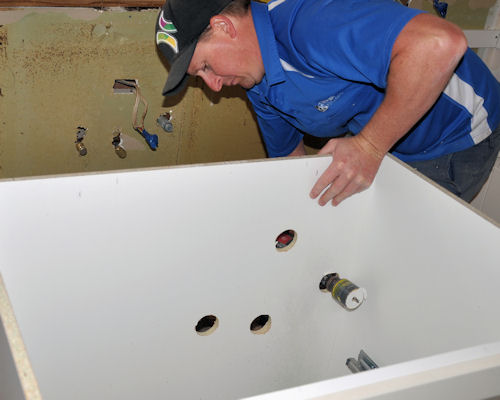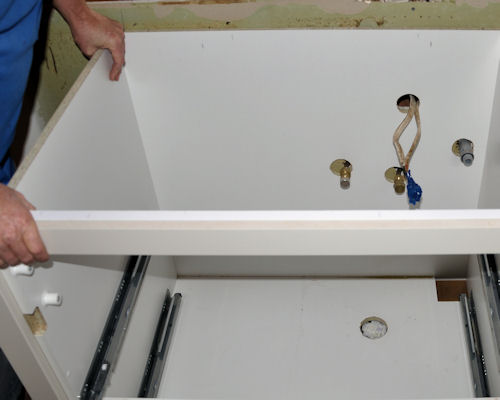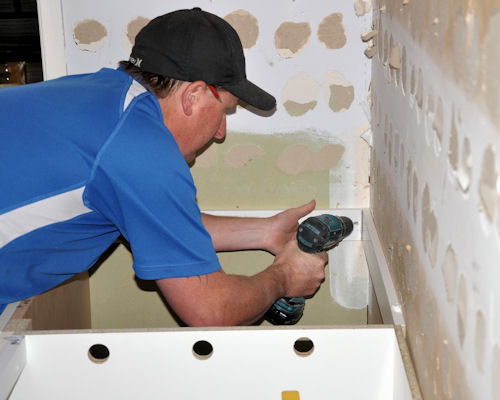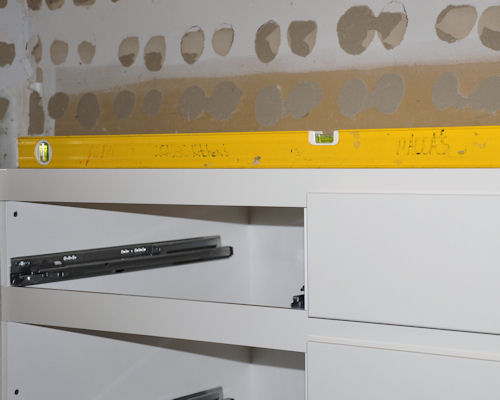Installing floor cabinets
 Audio for slide 2 (mp3 |6|KB)
Audio for slide 2 (mp3 |6|KB)
- Finish off any adjustments that need to be made to the cabinets, such as cutting holes for plumbing, electrical or gas services.
See the lesson: 'Service outlets' from the unit Checking fit of cabinets for more details on how to set out for these modifications.
Also remove the doors and label them so they can be matched up again later.

 Audio for slide 3 (mp3 |6|KB)
Audio for slide 3 (mp3 |6|KB)
- Place the cabinets one by one onto the plinth.
In most cases, you'll find it easiest to begin with a corner unit and work progressively along the wall.
As each cabinet is put in position, fasten it to the previous cabinet or other panel, using the screws or bolts that have been specified for the job.
Dress any visible screw or bolt heads with plastic trim caps.

 Audio for slide 4 (mp3 |6|KB)
Audio for slide 4 (mp3 |6|KB)
- Fasten the floor units to the wall, using the appropriate fasteners for the material you're fixing to - which will most likely be timber studs, steel studs or masonry.
If there's a gap between the wall and the back of the unit, insert a packing piece.
Make sure the packing piece is exactly the right thickness to keep the cabinet plumb when you pull it up tight with the fastener.

Learning activity
 Audio for slide 5 (mp3 |6|KB)
Audio for slide 5 (mp3 |6|KB)
You'll use different fasteners for different purposes and materials when you fix the cabinets into position. Name the fasteners you're likely to use when installing a set of floor cabinets in a timber framed kitchen. Include the fasteners used to fix the cabinets to each other as well as the fasteners that go down to the floor and through to the wall frame.
Share your answers with your trainer and other learners in your group.

Go to Installing wall cabinets
Industry Network Training and Assessment Resourses
© 2016 Workspace Training


